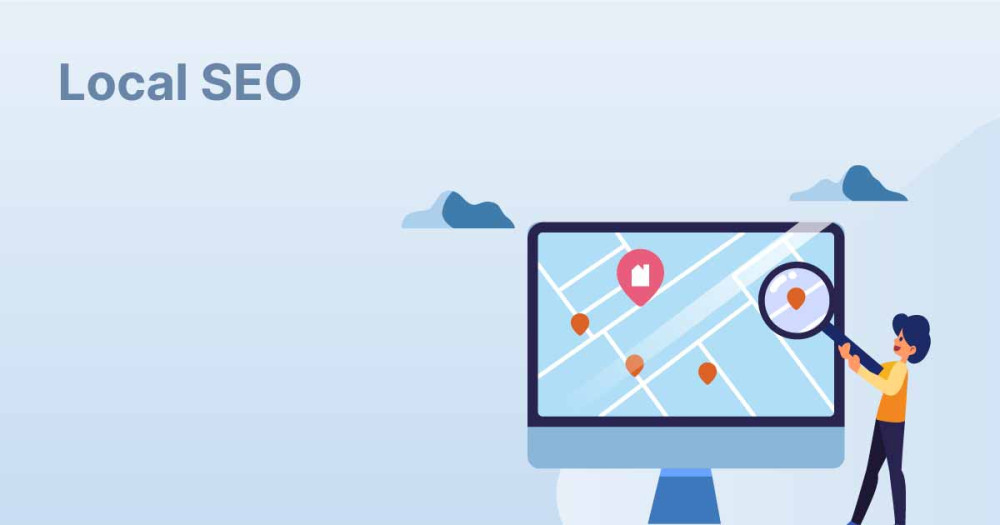Local SEO: How to Optimize for Local Search Results
Local SEO is crucial for businesses that want to attract customers in their geographical area. By optimizing for local search results, you can enhance your online visibility, drive more traffic to your website, and increase foot traffic to your physical location. This guide will help you understand how to effectively implement local SEO strategies.
Understanding Local SEO
Local SEO (Search Engine Optimization) focuses on optimizing a website to be found in local search results. These searches typically include location-specific keywords, like “restaurants near me” or “best plumber in [city].” Google and other search engines use various signals to deliver the most relevant local results to users.
Why Local SEO Matters
Increased Visibility: Local SEO helps your business appear in the “Local Pack” or “3-Pack,” the top three listings displayed with a map for local searches.
Higher Conversion Rates: Local searches often lead to higher conversion rates as users are looking for services or products in their vicinity.
Mobile Search Dominance: With the rise of mobile searches, optimizing for local SEO ensures that your business is easily found by users on the go.
Steps to Optimize for Local Search Results
1. Claim and Optimize Your Google My Business Listing
Google My Business (GMB) is a free tool that allows businesses to manage their online presence on Google, including Search and Maps.
Claim Your Listing: If you haven’t already, claim your Google My Business listing.
Complete Your Profile: Ensure all information is accurate and complete, including your business name, address, phone number, website, and hours of operation.
Add Photos and Videos: High-quality images and videos can enhance your profile and attract more customers.
Collect and Respond to Reviews: Encourage satisfied customers to leave positive reviews and respond promptly to all reviews, showing that you value customer feedback.
2. Optimize Your Website for Local SEO
Your website should be optimized for local keywords and provide a great user experience.
Local Keywords: Perform keyword research to identify relevant local keywords and phrases. Use tools like Google Keyword Planner or Ahrefs.
On-Page SEO: Incorporate local keywords naturally into your website’s meta titles, descriptions, headers, and content. For example, instead of “best coffee shop,” use “best coffee shop in [city].”
NAP Consistency: Ensure your Name, Address, and Phone number (NAP) are consistent across your website and other online directories.
Local Content: Create content that resonates with your local audience. This could include local news, events, or blog posts about community topics.
3. Get Listed in Online Directories and Citations
Online directories and citations (mentions of your business name, address, and phone number on other websites) help improve your local search rankings.
Major Directories: Ensure your business is listed on major directories like Yelp, Yellow Pages, and Bing Places for Business.
Local Directories: Find and get listed on local directories and industry-specific directories.
Consistency: Ensure your NAP information is consistent across all directories and citations.
4. Build Local Backlinks
Backlinks from other websites to your site are crucial for SEO, and local backlinks can boost your local search visibility.
Local Sponsorships and Partnerships: Sponsor local events, join local business organizations, and build relationships with local influencers to earn backlinks.
Guest Blogging: Write guest posts for local blogs and websites. Include a link back to your website in your author bio or within the content.
Local News: Get featured in local news articles or press releases to earn valuable local backlinks.
5. Use Social Media to Engage Locally
Social media platforms can drive local traffic to your website and enhance your local SEO efforts.
Local Content: Share content that is relevant to your local audience. This can include news, events, and community updates.
Engagement: Engage with local users by responding to comments, participating in local discussions, and using local hashtags.
Local Ads: Run social media ads targeting your local audience to increase your visibility and drive traffic to your website.
6. Monitor and Improve Your Local SEO Performance
Regularly monitor your local SEO performance to identify areas for improvement and track your progress.
Google Analytics: Use Google Analytics to track your website traffic and see how much comes from local searches.
Google Search Console: Monitor your search performance, check for indexing issues, and see which queries bring the most traffic to your site.
Local Rank Tracking Tools: Use tools like Moz Local or BrightLocal to track your local search rankings and identify opportunities for improvement.
Conclusion
Optimizing for local search results is essential for businesses looking to attract customers in their geographical area. By claiming and optimizing your Google My Business listing, optimizing your website, getting listed in online directories, building local backlinks, engaging on social media, and monitoring your performance, you can improve your local SEO and drive more local traffic to your business. Consistency and ongoing effort are key to maintaining and enhancing your local search visibility.


